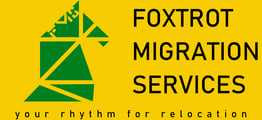Foxtrot Migration Services Chandigarh +91-7827605405 foxtrotmigration61@gmail.com
The Child Visa for Australia allows children of Australian citizens, permanent residents, or eligible New Zealand citizens to live in Australia permanently. There are several types of child visas, depending on the child's circumstances, age, and location (onshore or offshore). These visas allow children to join their parents in Australia and obtain permanent residency.
Key Types of Child Visas:
Subclass 101 - Child Visa (Offshore)
This visa allows a child outside of Australia to move to Australia permanently to live with their parent, who is an Australian citizen, permanent resident, or eligible New Zealand citizen.
Permanent Residency: The child becomes a permanent resident upon the visa grant.
Eligibility: The child must be under 18, or between 18-25 and financially dependent on the parent, or over 18 with a disability that makes them dependent on the parent.
Subclass 802 - Child Visa (Onshore)
Like the Subclass 101 visa, but this visa is for children already in Australia.
Permanent Residency: The child is granted permanent residency to live with their parent in Australia.
Eligibility: Same as the Subclass 101 visa; the child must be under 18 or dependent if older.
Subclass 445 - Dependent Child Visa (Temporary)
This is a temporary visa for a dependent child whose parent is the holder of the temporary partner Visa (Subclass 820 or Subclass 309).
The child can stay in Australia while the parent’s permanent partner visa is being processed, and the child can then be included in the permanent partner visa application.
General Eligibility Criteria for Child Visas:
Child's Age: The child must generally be under 18 years old unless they are financially dependent on the parent and aged between 18 and 25, or over 18 with a disability.
Parent's Status: The child’s parent must be an Australian citizen, permanent resident, or eligible New Zealand citizen.
Health and Character Requirements: The child must meet Australia’s health and character requirements.
Dependent Relationship: Children over 18, must be financially dependent on the parent or have a recognized disability that makes them reliant on their parent.
Parental Consent: If the parents are separated or divorced, the visa application must include proof that the parent in Australia has legal custody or permission from the other parent for the child to migrate.
Application Process:
Sponsorship: The child’s parent (sponsor) submits the visa application on the child's behalf.
Visa Application: The application is lodged either onshore or offshore, depending on the visa subclass.
Documents: The application must include documents proving the parent-child relationship, the parent's status, and any required consents (e.g., custody agreements).
Benefits of the Child Visa:
Permanent Residency (for subclass 101 & 802): The child will become a permanent resident of Australia, with the ability to live, study, and work in Australia.
Access to Medicare: The child will be able to apply for access to Australia’s public healthcare system, Medicare.
Pathway to Citizenship: Once granted permanent residency, the child can eventually apply for Australian citizenship.
Education: The child will have access to education in Australia, with potential benefits such as reduced fees for public schools.
Child Visa
Subclass 101 - Child Visa (offshore)
Subclass 802 - Child Visa (Onshore)
Subclass 445 - Dependent Child Visa (Temporary)
© 2024. Foxtrot Migration by Rakesh I All rights reserved.
Contact Us


Streamlining your migration journey with expert advice and customized support
FOXTROT MIGRATION SERVICES
SCO 54-55-56, 3rd & 4th Floor, Sector 17 A
Opp. Hyatt Centric
Chandigarh 160017
